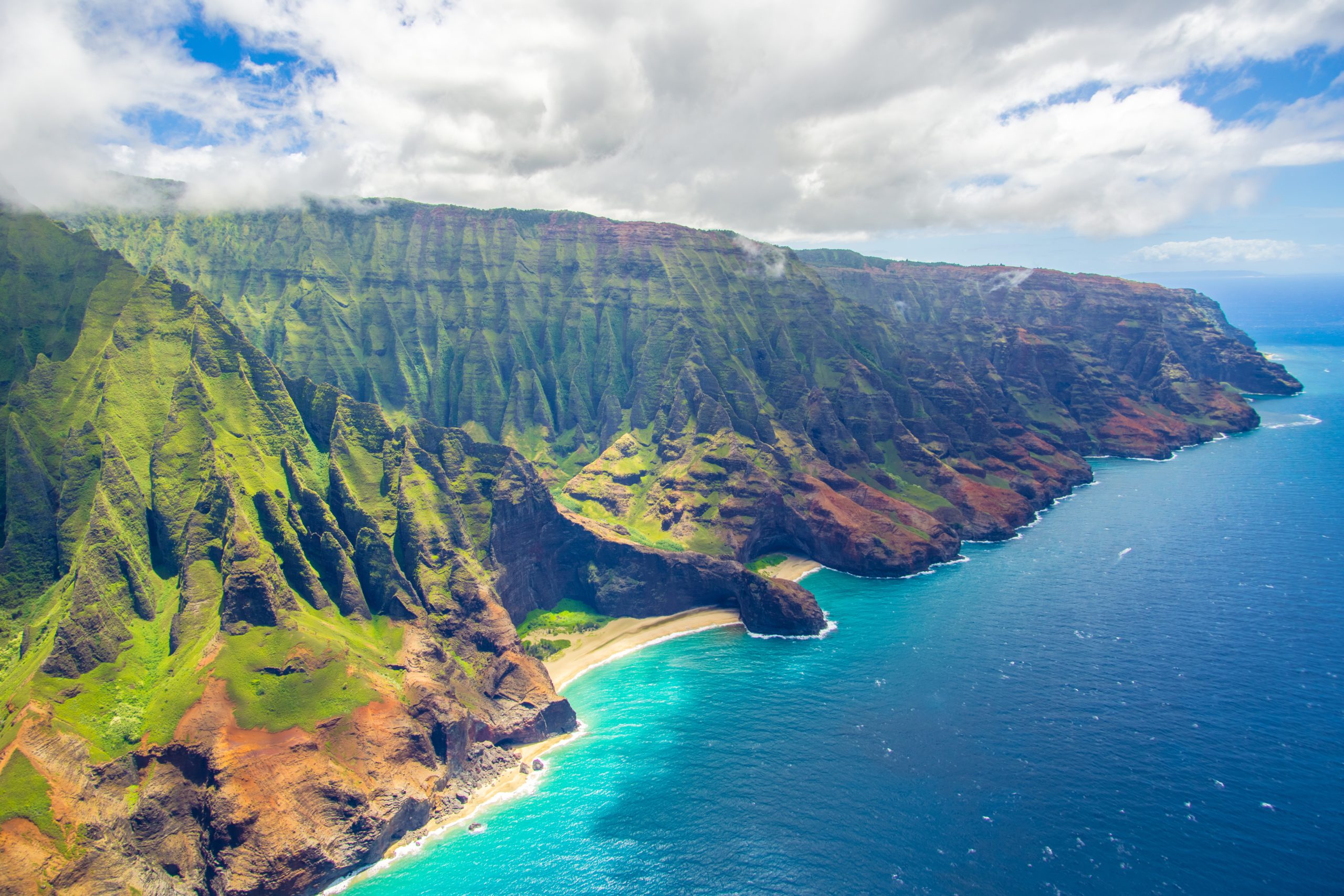Climate Change and Hawaii
Hawaii is a collection of volcanic islands, located in the middle of the Pacific Ocean. The oldest islands, like Kauai, are located to the North West. More recent islands are located further south, where eruptions are still regular. Hawaii is the name of the biggest island, hence why Hawaii is also known as the Big Island.
Hawaii much like other atoll nations is severely under threat from climate change, being little above sea water and also having a warmer climate. 2019 was the hottest year ever recorded on O’ahu, and the last five years have seen peak average annual temperatures. Their website states that it was so hot in 2015 – 2016 that emergency public service announcements were issued to curtail escalating air conditioning use because it stressed the electrical grid.
The El Nino phenomenon exacerbated temperatures on the island, where the El Nino effect typically causes hot days, intense rain, active hurricane season and spikes in sea surface temperature. Although the El Nino effect is naturally occurring, climate change is causing the frequency and intensity to worsen.
Climate Change
Located in Hawaii is the Mauna Loa Observatory, which has taken centre stage for climate change research. Keeling Curve which shows global temperatures as we know it, used data taken from the Observatory of seasonal and annual changes in atmospheric carbon dioxide since 1958.
Due to the remote location of Hawaii, and the height of the mountain where the Observatory is located, pollution and human interference is not as prevalent as it would be in a city or main island. Nevertheless “vog”, volcanic fog, can disrupt studies of air particles.
Climate Change poses a lot of threats to Hawaii and other low-islands and atolls.
- Increased risk of flooding threatens the low lying islands, and real threat of submersion from rising sea levels. Sea level rises can also severely impact commercial fishing and industry.
- Loss of coral reefs and vital marine ecosystems that protect against flooding and storm surges, and are also home to many endangered and endemic species.
- Loss of biodiversity both on the island and sea if islands are lost or climate increases or remains unpredictable.
- Potential for dangerous and deadly heat waves due to the El Nino effect and unpredictable nature of climate change
- Monumental effect on tourism if the islands losses territory or climate becomes untenable. In 2008, over 6.8 million visitors came to Hawaii and spent $11.4 billion, which accounted for 18% of Hawaii’s gross domestic product
- Migration to other nations from ‘environmental refugees’. As low-lying islands are threatened, people will move and this can cause tensions and conflicts elsewhere.
Biodiversity
Hawaii and the other islands are remote which make them ideal for biodiversity, with many hosting a diversity of species, some of which are endemic, such as the Hawaiian Duck and Hawaiian monk seal.
The colonisation of Hawaii over the centuries has threatened biodiversity with exploitation and alien or invasive species. Honolulu is located on the old island of Oahu, and is now a bustling city, which has affected plant and animal life. Since human occupation, Hawaii has lost 40% of its 70 bird species – while three quarters of the remaining number are threatened.
Climate Change and unpredictable weather patterns are threatening biodiversity further, including the acidification of the oceans which endangers coral rock formations and the life that relies on them.
Threats to Hawaii
Loss of Forests
Hawaii has lost 1.5 million acres of native forests. These forests are natural water and climate regulators, trapping carbon and storing water. The loss of forests means a change in weather and temperatures.
Invasive Species / Loss of Biodiversity
Hotter summers mean fast-growing invasive species are superseding native species, like many Californian shrubs and grasses. These invasive species also increase the risk of fire and decrease biodiversity
Increased Wildfires
Worsened by climate change, wildfires are becoming more prevalent, costing Hawaii their land, biodiversity and income. these fires don’t just cost us our land. Wildfires are disrupting the fragile ecosystems, spread disease, degrade air quality, cause landslides, and destroy valuable resources and infrastructure.
Coral Reef Destruction
Warmer waters are eradicating sea life, whereby less oxygen in the water is stifling coral reef creation. The loss of coral reefs impacts the species that rely on them, such as fish, which in turn greatly impacts commercial fishing. Tourism would also suffer with the loss of coral reefs and their inhabitants.
Water Availability
Rainfall in Hawaii has been decreasing, but it is not clear if this is the impact of the El Nino effect. Climate change-related increases in air temperatures also impacts the hydrological cycle, making rainfall unpredictable. Streams and rivers on the Hawaiian Islands have experienced a reduction in flow, resulting in less fresh water available for people and ecosystems.



